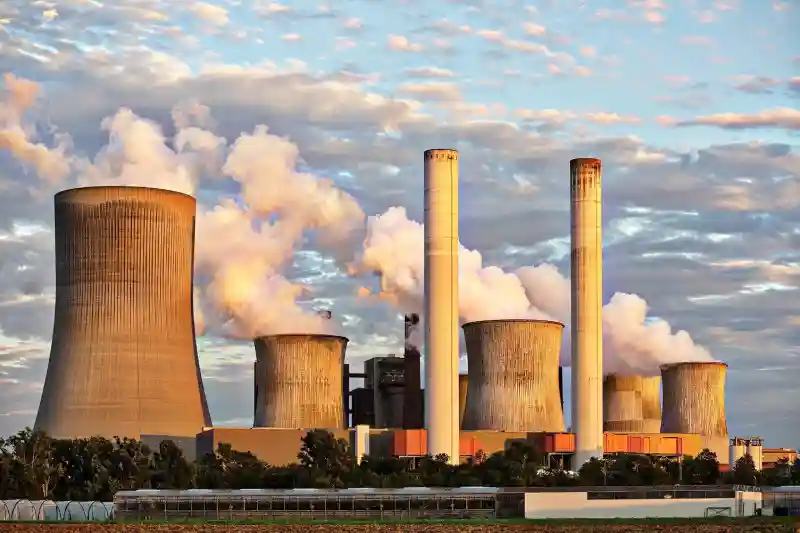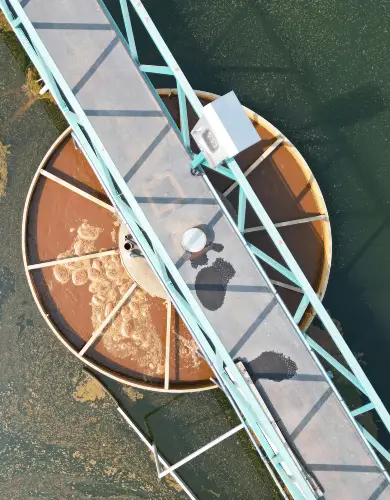Turning Old Coal Power Stations into Nuclear Reactors?
Coal power stations are being decommissioned at breakneck speed due to the energy transition, rendering billions of dollars of idle infrastructure unusable for any application of the same magnitude.
Yes, these colossal structures can be turned into museums or boujee art galleries like in Manchester and Liverpool, but this does nothing to replace the gap in electricity generation and grid support that these once-glorious power stations once provided.
So, what if we told you that the likes of Bill Gates and Warren Buffet are going ALL IN on turning these dying giants into the future of both baseload electricity generation and energy storage to support the renewables explosion?
Contents
- A Changing Energy Landscape
- New Tech: Natrium Reactors with Energy Storage
- Advantages of Upcycling Coal Power Stations
- Challenges and Considerations
- Conclusion
- External Resources
A Changing Energy Landscape

The global energy landscape is rapidly changing, with coal plants gradually retiring to make way for green energy sources. However, there is a lot of partisanship within the low carbon energy community as to which alternatives are necessary.
While some are strictly anti-nuclear and others anti-intermittent renewables, in the U.S., two prominent figures are clearly considering what technology should lead the net-zero charge.
Following a US Department of Energy investigation, TerraPower (a Bill Gates-backed nuclear developer) and PacifiCorp (a large US utility company owned by Warren Buffet’s Berkshire Hathaway) announced a study to determine if up to five coal plants could be equipped with advanced nuclear reactors.
Their stance is based on the fact that advanced nuclear reactors offer a larger potential for jobs, zero-carbon electricity, negligible risk of meltdown, and a more resilient and diversified energy transition strategy than simply relying on renewables.
New Tech: Natrium Reactors with Energy Storage
TerraPower and PacifiCorp have agreed to build a 345-megawatt Natrium nuclear reactor at the site of a retiring coal plant in western Wyoming, US, called Naughton Power Plant.
The project aims to demonstrate that a coal-to-nuclear conversion is viable, with the reactor’s design currently awaiting approval from the U.S. Nuclear Regulatory Commission.
If approved, it will be the first coal-to-nuclear conversion incorporating energy storage, a truly disruptive attempt if successful.
This unique technology utilises molten salt to cool the plant, which can be stored in large tanks and later released to generate heat that turns a turbine, enabling the facility to ramp up power to 500 MW for several hours.
This effectively turns this plant into a key infrastructure for large-scale grid stabilisation, complementing flywheels, CAES, and PSH with frequency balancing, load cycling, and general grid stabilisation that will be able to complement new renewables.
This is such a promising endeavour that the US Department of Energy (DOE) awarded the company nearly $2 billion for its first reactor, and the company raised $750 million in an equity fundraiser.
If the Nuclear Regulatory Commission approves the project, construction may begin as early as 2024, and it could start generating electricity in 2028, which seems very ambitious given the paradigm shift nature of the project.
Advantages of Upcycling Coal Power Stations
Repurposing coal power stations with advanced nuclear reactors, such as the Natrium reactor, offers potential benefits.
Saving costs
Preserving existing infrastructure reduces the costs of land acquisition (assuming its the same owners!), grid connectivity, and any existing reusable infrastructure such as water management systems, cooling towers, turbines and heat exchangers.
Building new transmission lines and interconnector infrastructure is troublesome while acquiring land and water permissions can be problematic.
The Naughton Power Plant project is expected to cost $4 billion, which is not a small sum but is significantly lower than the typical LCOE of a nuclear plant according to our raw calculation:
Assuming the power station runs for 30 years with the ratio of capital: operational costs being 50:50, the LCOE of this advanced nuclear station would be around ~$80 per MWh, which is below our generalised nuclear LCOE aggregation of ~$110 per MWh.
These novel designs could potentially make nuclear a competitive source of low-carbon electricity, more so than SMRs and Microreactors.
Saving time
National grids are already under pressure to adapt the entire grid infrastructure to accommodate new renewable projects. This gridlock in the grid adds time uncertainty to new energy sites that may be delayed due to national grids falling behind.
However, re-using existing energy assets conveniently comes with an existing transmission that saves time and reduces the reliance on any investment in the grid to accommodate the success of your project.
Remember that nuclear reactors turn turbines just like coal, so no significant changes to the transmission are required; it’s almost plug-and-play!
And this goes without mentioning that much of the civil infrastructure of the coal power station is already implemented, potentially shaving off years from the construction itself of a new reactor.
Jobs
While large-scale wind and solar installations require a small workforce once installed, a nuclear power station requires significantly more staff.
This may be seen as a tremendous disadvantage in a rapidly-automating world, but it may actually be the trigger that impulses this project into implementation as more jobs are generally seen as a very positive thing, especially for locals.
Once finished, the proposed conversion would require a direct workforce of 250, offering competitive salaries in the clean energy sector to local populations who have been struggling since the decommissioning of the existing coal power station.
Replacing baseload with baseload
While intermittent renewables require energy storage to provide baseload power (i.e. consistent, reliable power), nuclear energy is largely considered the MVP of baseload power available due to its colossal power capacity, consistency and negligible emissions.
Directly replacing a baseload coal power station with a more advanced low-carbon baseload alternative is simply the most elegant solution to the energy transition (with the caveat that it needs to be done properly!).
On the other hand, new wind or solar farms mean developing other areas and building new infrastructure, certainly leaving a larger footprint and activating the parts of our human psyche that despise change.
Challenges and Considerations
Any project of this magnitude is a double edge sword, and there are some very serious challenges ahead for the conversion…
Regulatory Concerns
Retrofitting old coal stations to meet modern nuclear safety standards may turn out to be hard, costly, and time-consuming, especially considering there are no precedents for these types of conversions.
And uncertainty is ripe territory for controversy, which tends to result in regulatory and political blockages, particularly given the sensitive debate around nuclear power. After all, the Three Mile Island nuclear disaster happened on U.S. soil.
TerraPower will submit its Natrium reactor design to the Nuclear Regulatory Commission (NRC) over the next couple of months, which will give observers like ourselves a chance to gauge how other institutions may react to this scheme.
Technical Challenges
Relying on unlicensed technologies is also risky from a technical standpoint, particularly considering the uncertainties surrounding the fuel source for these reactors- Natrium.
It is still unclear how much of the existing infrastructure (besides the transmission system) can be repurposed: cooling towers, desalination plants, water storage systems, etc.
Dwelving deep into Natrium reactors is outside the scope of this article, but it is worth noting that there are no existing commercial-scale Natrium reactors in existence, despite its promises to enable this storage-generation combo at unprecedented efficiencies.
Financial Uncertainties
It remains unclear how much of the $4 billion cost for the Naughton power plant would be borne by ratepayers. Also, it is unclear how the technical challenges and regulatory concerns may change the project’s total costs.
There is no way of hiding that this cost estimation is, in reality, highly variable, making it a potential bit detractor when it comes to raising capital and being eligible for funding (they’ve been successful so far, though).
We would be truly surprised if the costs are ultimately kept in the vicinity of $4 billion, although doing so would be a massive boost to any future conversion endeavours, something that would please existing coal power station owners and operators, as their survival may just hinge on this project…
Conclusion
While the project has hard-hitting backers and the idea is great on paper, there is still a lot of technical, financial, regulatory and public perception uncertainty to the project.
Will it be approved? Will there be riots? Will it ultimately lead to even more expensive business electricity prices?
However, if the teams pull it off, not only will they prove that existing coal assets can be re-used for the energy transition, but they may just kickstart a nuclear renaissance that is looking increasingly unlikely (except in China!)
External Resources
- The Guardian – UK shutting off coal
- US DOE – Converting Coal into Nuclear
- US DOE – Full Report – Converting Retiring Coal Plants into Nuclear Plants
- Naughton Power Plant – GEMwiki
- Scientific American: Utility Explores Converting Coal Plants into Nuclear Power
- IEEE Spectrum: Converting Coal to Nuclear
- WEF
- oilcity news
- Carbon Brief – Coal Power Stations

